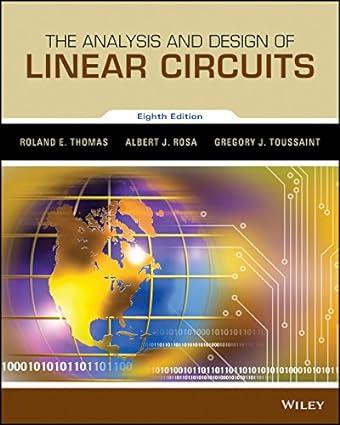The use of the decibel as a measure of performance pervades the literature and folklore of electrical
Question:
The use of the decibel as a measure of performance pervades the literature and folklore of electrical engineering. The decibel originally came from the definition of power ratios in bels.

The decibel (dB) is more commonly used in practice. The number of decibels is 10 times the number of bels:

When the input and output powers are delivered to equal input and output resistances R, then the power ratio can be expressed in terms of voltages across the resistances.

or in terms of currents through the resistances:

The definition of gain in dB in Eq. (12–3) is consistent with these results, since in the sinusoidal steady state the transfer function equals the ratio of output amplitude to input amplitude. The preceding discussion is not a derivation of Eq. (12–3) but simply a summary of its historical origin. In practice, Eq. (12–3) is applied when the input and output are not measured across resistances of equal value.
When the chain rule applies to a cascade connection, the overall transfer function is a product
![]()
where T1, T2,…,TN are the transfer functions of the individual stages in the cascade.
Expressed in dB, the overall gain is

Because of the logarithmic definition, the overall gain (in dB) is the sum of the gains (in dB) of the individual stages in a cascade connection. The effect of altering a stage or adding an additional stage can be calculated by simply adding or subtracting the change in dB. Since summation is simpler than multiplication, the enduring popularity of the dB comes from its logarithmic definition, not its somewhat tenuous relationship to power ratios.
Step by Step Answer:

The Analysis And Design Of Linear Circuits
ISBN: 9781119235385
8th Edition
Authors: Roland E. Thomas, Albert J. Rosa, Gregory J. Toussaint





